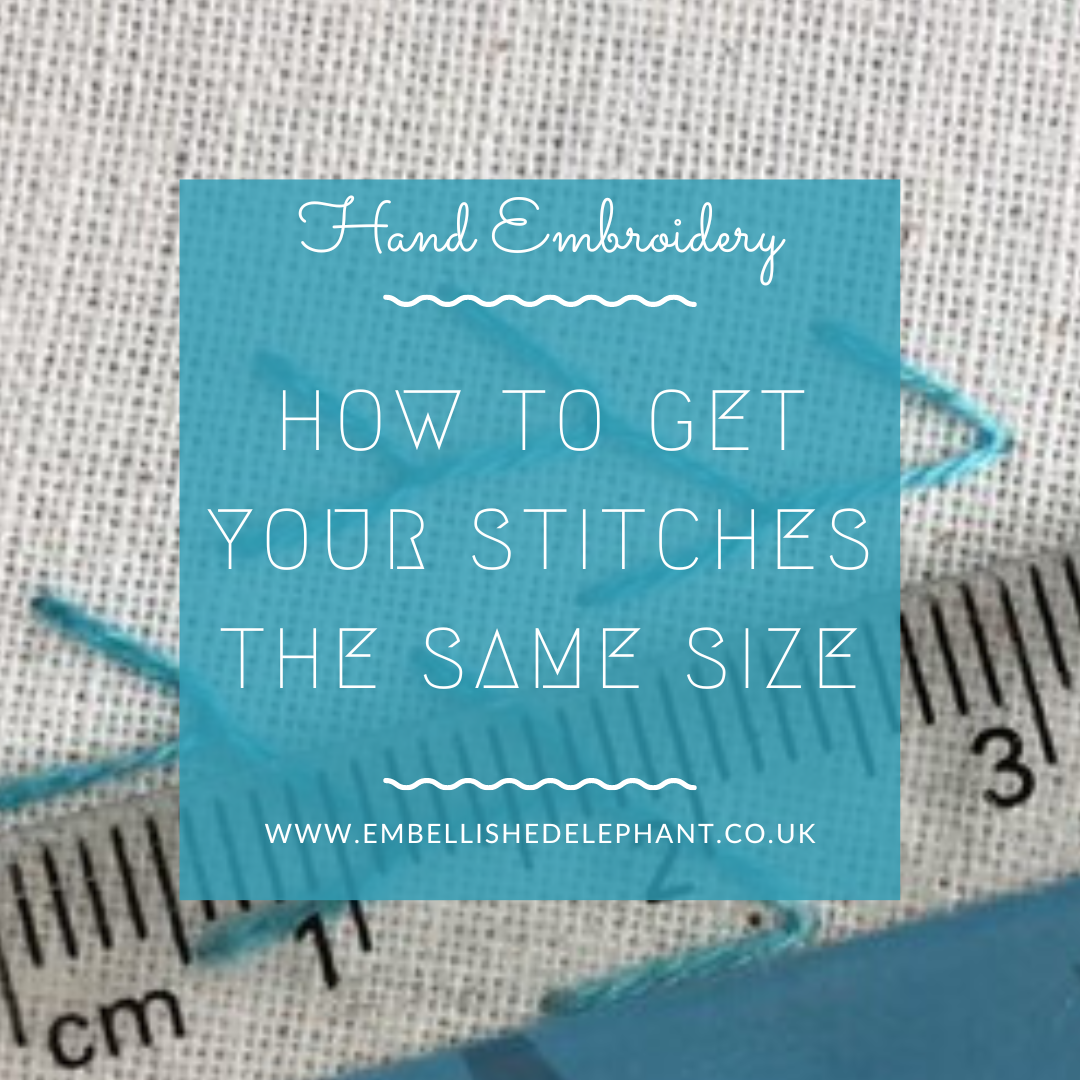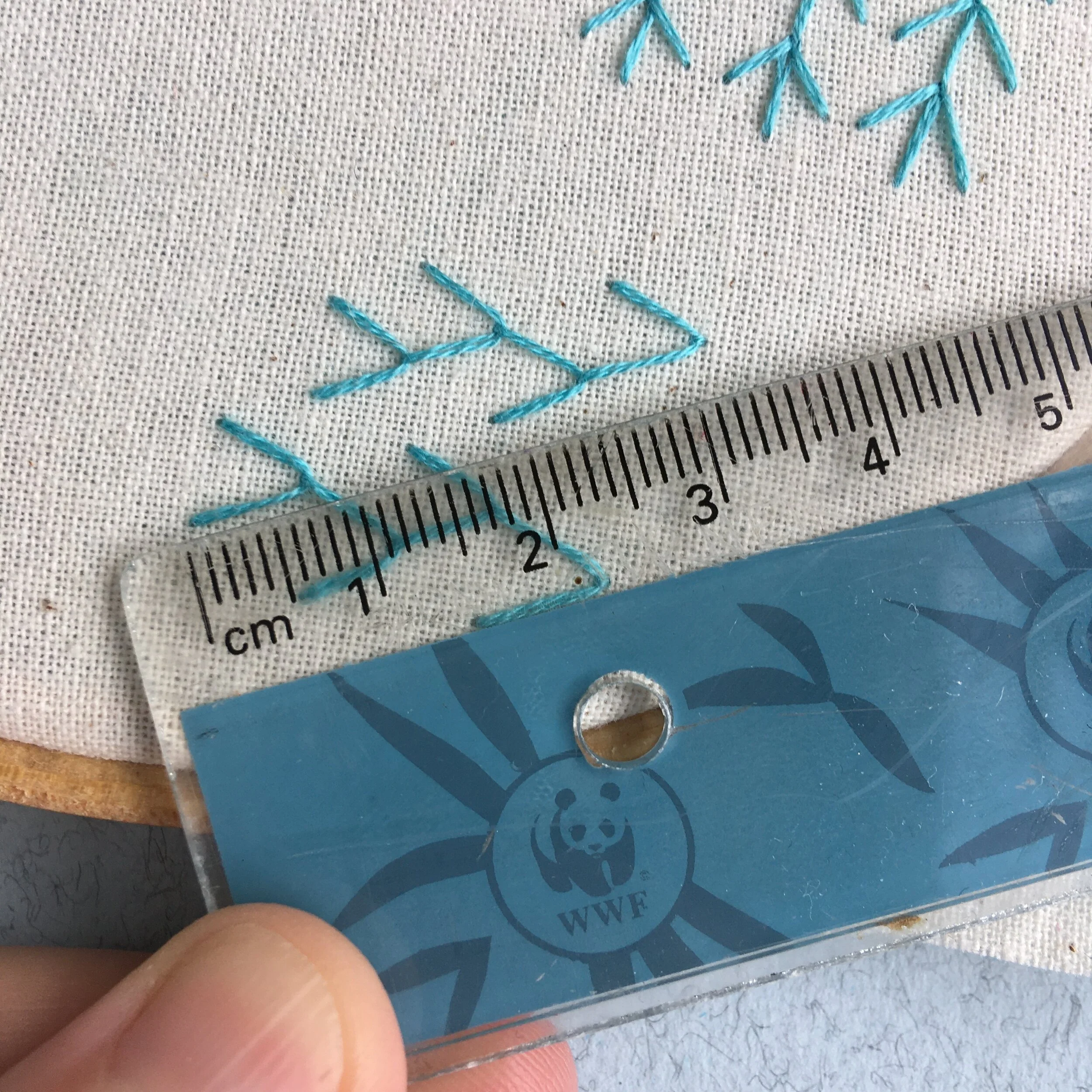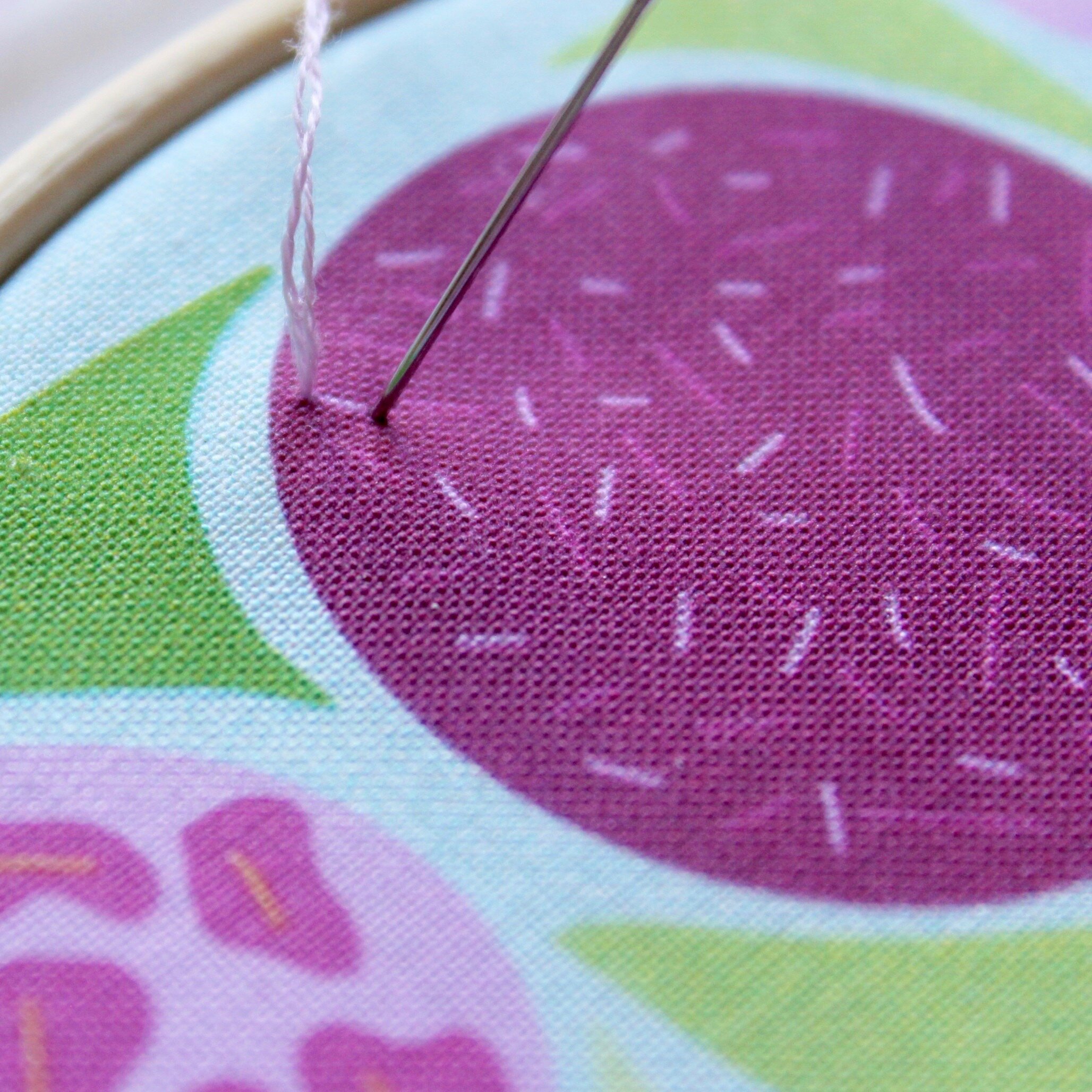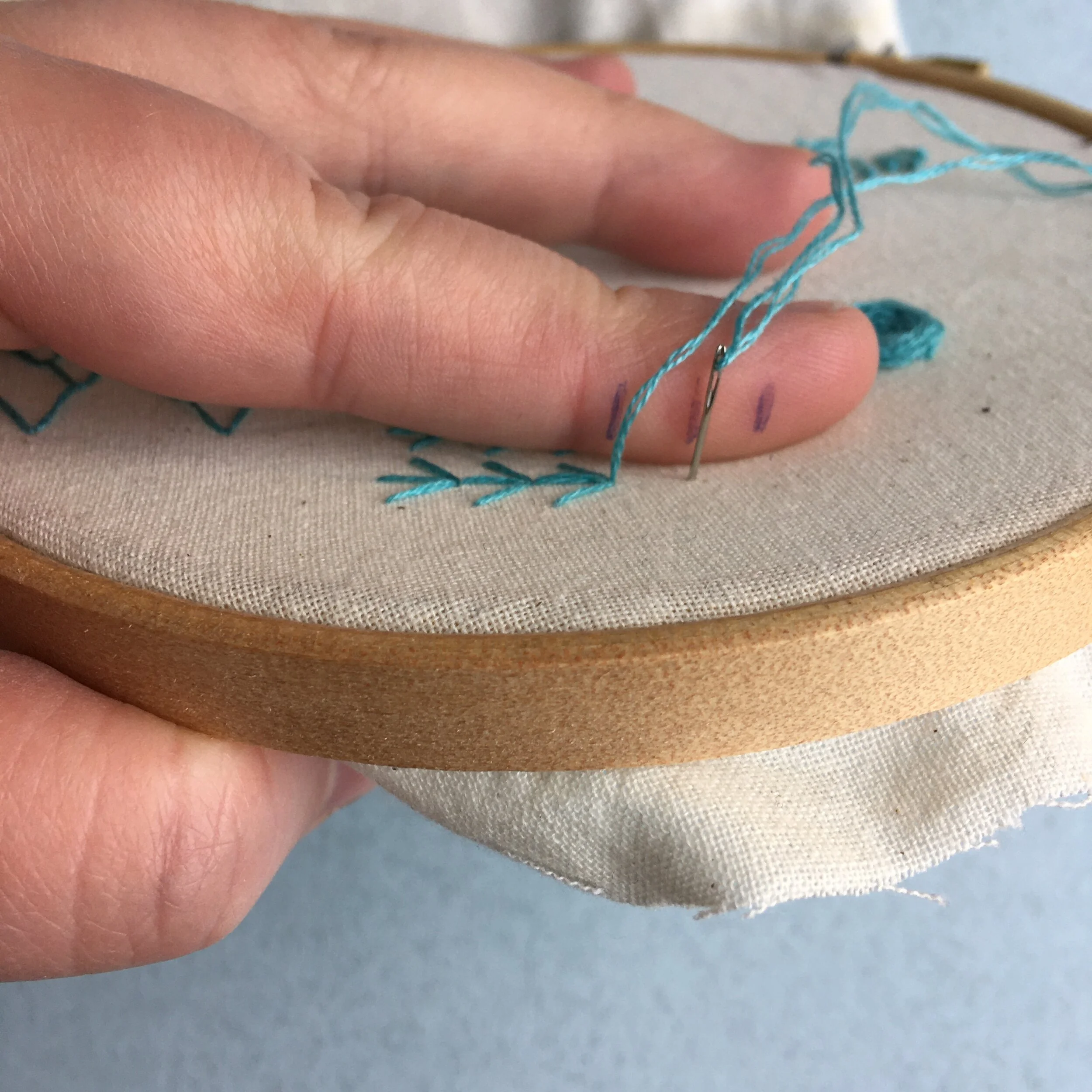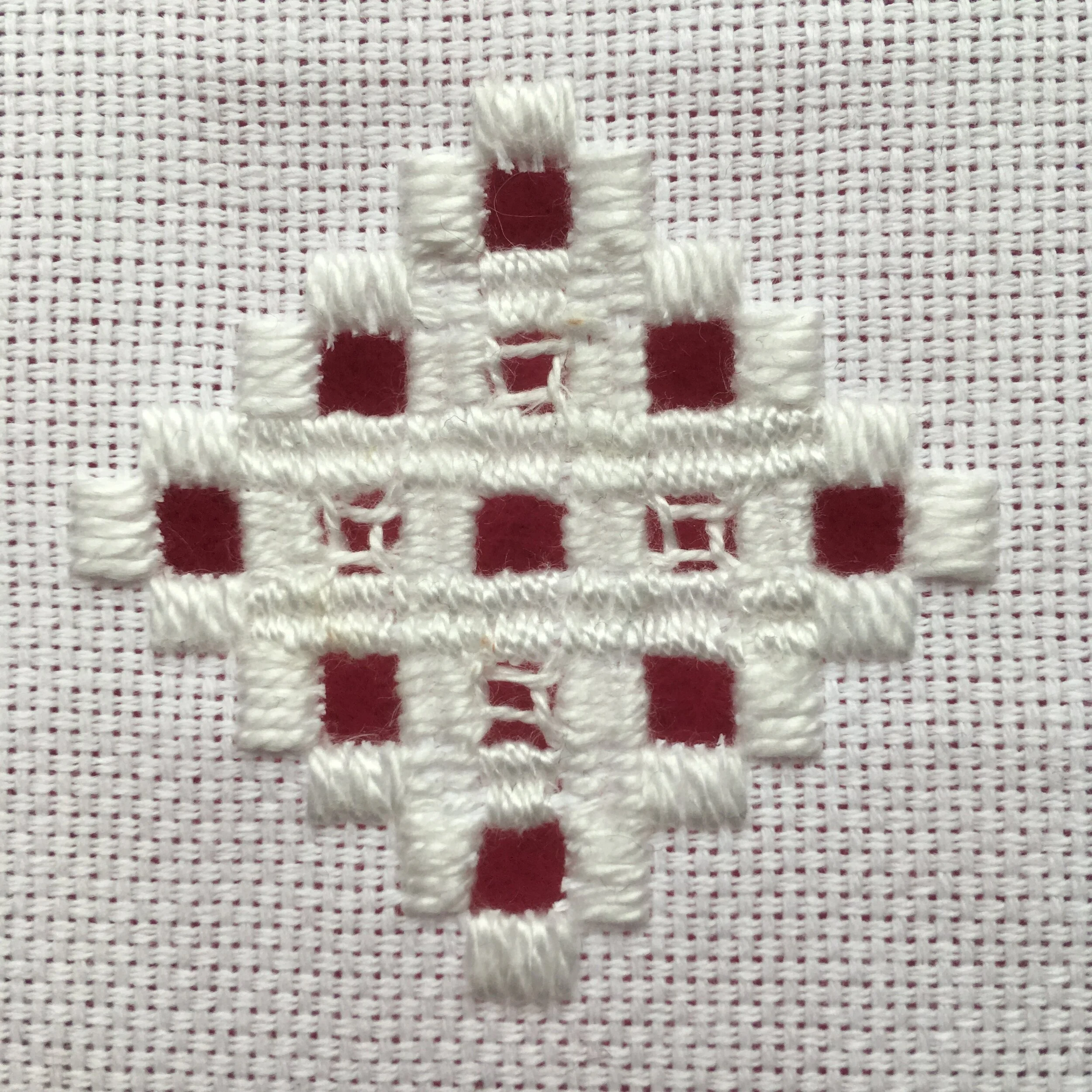There are some designs where you want stitches to be an identical size to give a polished finished. But how do you achieve this? Here are five techniques that might help.
By eye
I have to admit this is normally the method I use. I feel fairly confident about judging small distances. I tend to stitch slowly and make sure that with each stitch I’m happy with the position of the needle before I complete a stitch. I also look back at the past few stitches to check I’m happy with the consistency and unpick if anything looks out of place.
For slightly longer stitches I use the needle and my finger to help judge the length of the stitch.
Use a ruler
This can really help with getting the right stitch length but you still need to make sure the position of the needle is accurate.
Working with a ruler can also be a bit cumbersome (even if it is my trusty WWF ruler I’ve had for 25 years).
Draw guidelines
This is a great alternative to to ruler especially if you are able to remove or stitch over the guidelines that you make. It means you don’t need to keep picking up/putting down the ruler with each stitch.
The type of guideline you use will depend on the stitch you are making but if I use this method I tend to use tiny dots rather than full lines as these are easier to stitch over.
In this picture the guidelines are pre-printed onto the fabric which makes it even easier!
Marks on your finger
I saw this ingenious method on Instagram as a tip for stitching blanket stitch. I’ve not tried it myself yet but in taking this photo I did find that I had to hold the hoop a bit funny to get the markings to be where I needed them. A bit of trial and error might be needed for this one!
Evenweave fabric
The clue is in the name - this type of fabric has an even number of warp and weft threads per inch. It means that if you stitch is five holes in length you can count this number of holes for every stitch you make to get stitches of identical length. It’s the fabric used for techniques such as blackwork and hardanger but you can also use high count evenweave fabrics for standard embroidery too (higher count means more warp/weft threads per inch and smaller gaps inbetween).
Enjoyed this blog post? I share embroidery tips and a free embroidery pattern in my monthly newsletter. Sign up here to receive the newsletter on the 1st of each the month.

